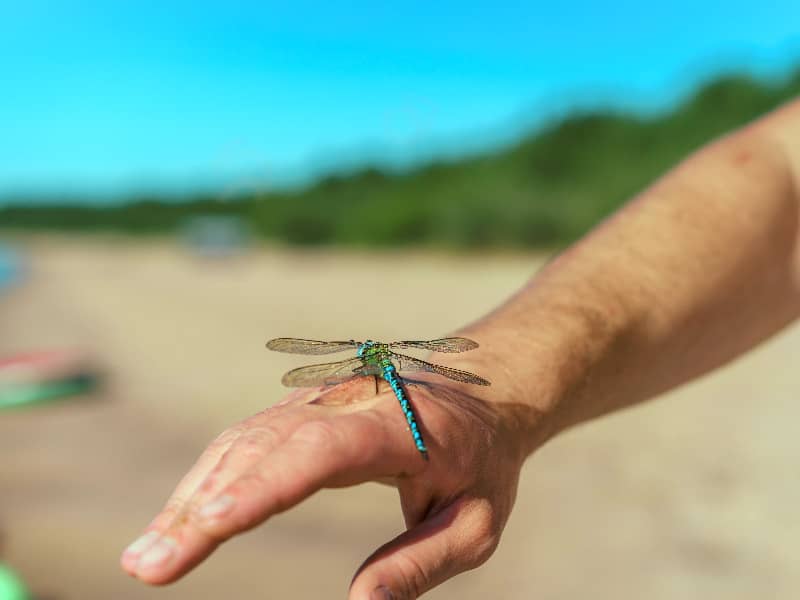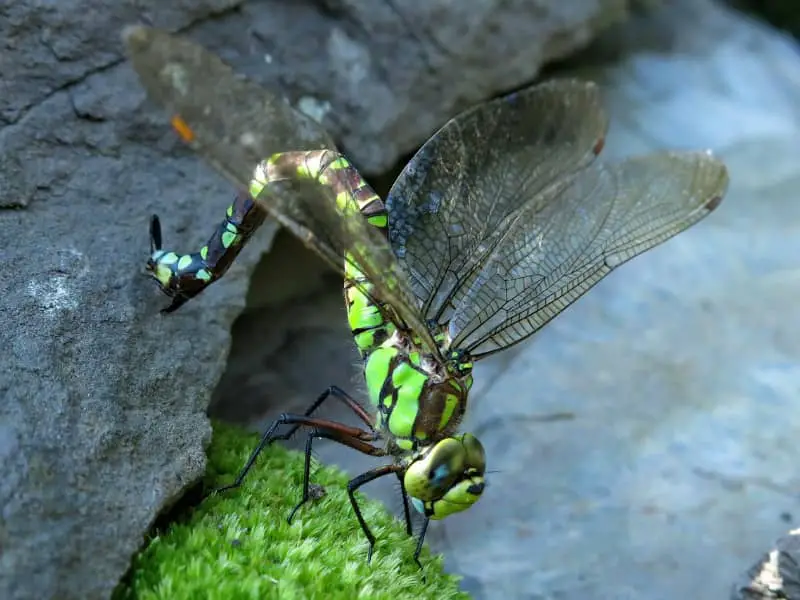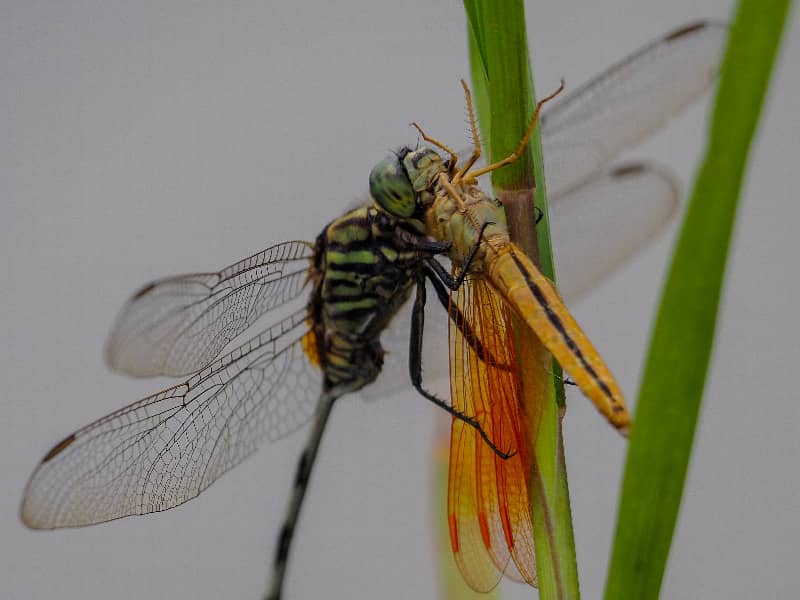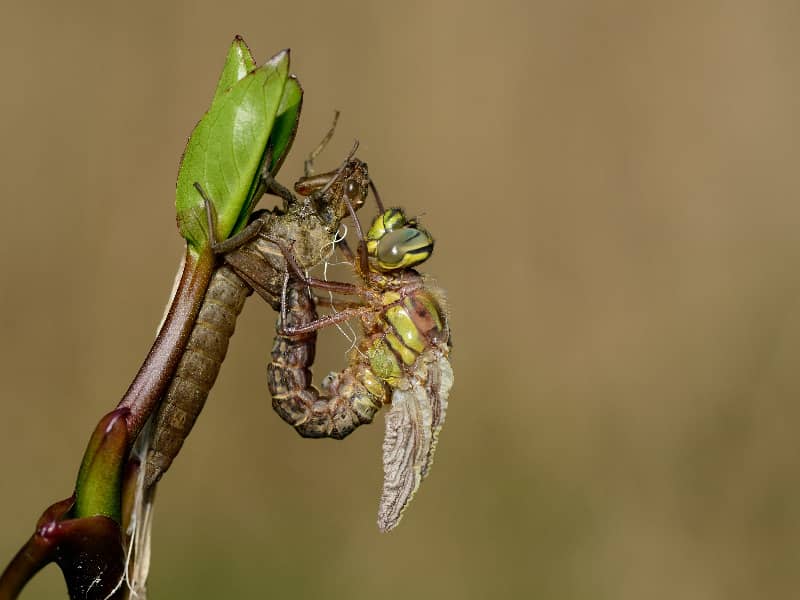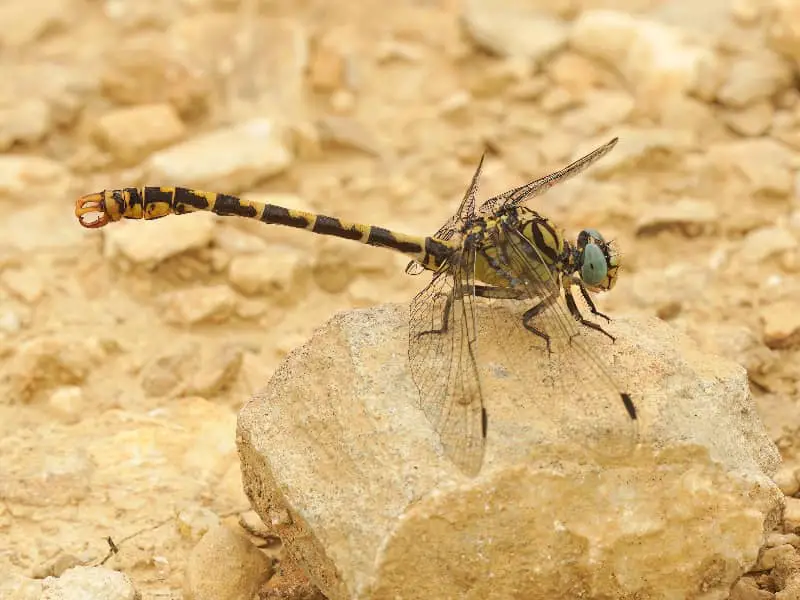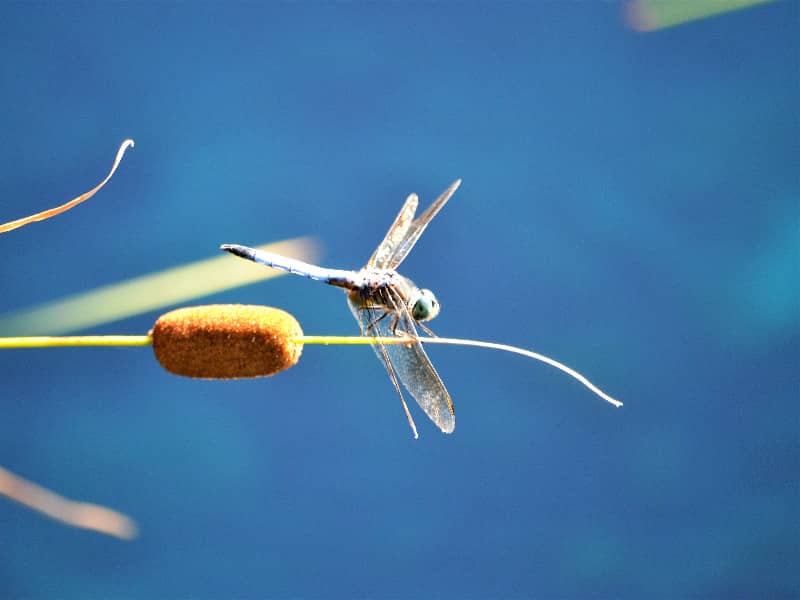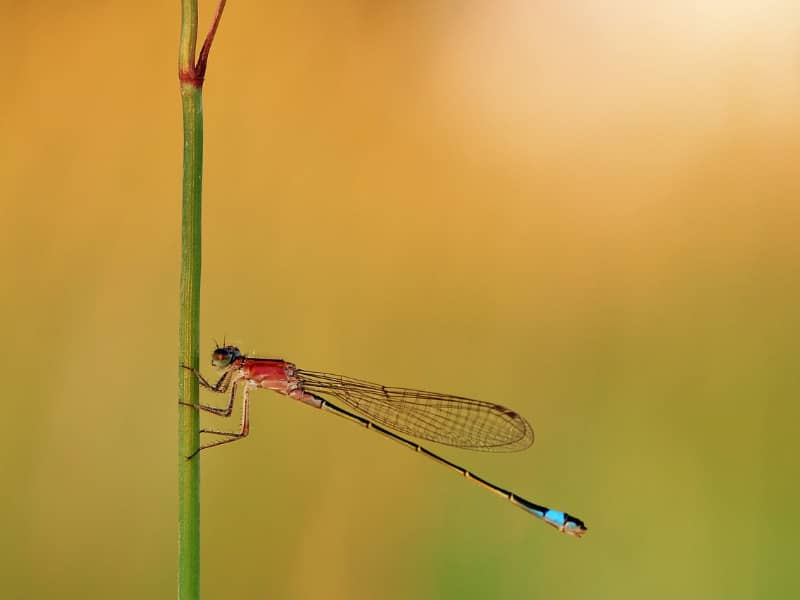
Large blue-tailed damselfly
The Large Damselfly, scientifically known as "Ischnura elegans", is a fascinating insect species native to many parts of Europe. With its striking blue body and distinctive black spot at the base of its wings, it is a true jewel of nature. In this article, we will take an in-depth look at the physical characteristics, habitat, behavior, and feeding habits of the Great Skylark. We'll also give you tips on how to attract this fascinating dragonfly to your garden. Let's dive into the fascinating world of the Large Damselfly!
- Large blue-tailed damselfly
- Physical characteristics of the large pitch dragonfly
- Habitat and distribution of the large damselfly
- Behaviour and feeding habits of the Great Pied Damselfly
- How to attract the Great Skylark to your garden
- Interesting facts about the Common Damselfly
- Tips for the observation of the large pitch dragonfly
- Conclusion
- FAQ
Physical characteristics of the large pitch dragonfly
The large pitch dragonfly is a medium-sized dragonfly with a body length of about 4 to 5 centimeters. The males have a conspicuous pitch-black abdomen, which has earned them their name. The females, on the other hand, are less conspicuous and have a brown coloration. A characteristic feature of the Large Pitched Damselfly is the black spot at the base of its transparent wings. This black spot is an important identification point and helps distinguish it from other dragonfly species. The Large Damselfly also has a long, slender body and large, conspicuous eyes.
Their wingspan is about 6 to 7 centimeters. This allows them to fly quickly and agilely. The Great Tough Dragonfly also has a long, thin tail fin that helps them swim and move around in the water. Overall, the physical characteristics of the Large Damselfly are impressive and make it a fascinating species.
Habitat and distribution of the large damselfly
The Common Damselfly is common in many parts of Europe. It prefers clear, stagnant waters such as lakes, ponds and slow-flowing rivers. These waters provide the ideal environment for it to hunt, mate and lay eggs. The Common Skylark is especially common in wet and mossy areas, as these places are rich in food and hiding places.
The Great Pied Dragonfly is usually active during the summer months, as it prefers higher temperatures. During the mating season, males fly above the water and defend their territory from other males. Females lay their eggs in aquatic plants where they develop into larvae. These larvae live in the water and feed on small insects and other aquatic organisms. Once the larvae are fully grown, they climb out of the water on plant stems or other structures to pupate and eventually hatch as adult dragonflies.
Behaviour and feeding habits of the Great Pied Damselfly
The Great Pied Dragonfly is a predatory species that feeds on small insects and other prey. They are skilled hunters and use their large eyes to spot their prey from the air. Once they spot a potential target, they fly quickly and accurately to catch their prey. The Large Pitched Dragonfly is also able to feed in flight, making it an efficient food source for itself.
During the mating season, males exhibit territorial behavior and defend their territory from other males. They fly above the water and make impressive aerial maneuvers to attract females. Once a female is found, they mate and the female lays her eggs in aquatic plants. This reproductive cycle is critical for the Great Skylark to maintain its species.
How to attract the Great Skylark to your garden
If you would like to experience the fascinating world of the Large Damselfly in your own backyard, there are a few steps you can take to attract them. First, it is important to create a suitable habitat for the Large Damselfly. This includes creating a pond or other standing body of water. Make sure the pond is sunny and contains enough aquatic plants to provide a suitable habitat for the dragonflies.
Another way to attract the Great Skylark to your garden is to plant flowering plants. These plants will serve as a food source for the adult dragonflies and attract them to your garden. Choose plants that are rich in nectar, such as lavender, coneflower, or stonecrop. These plants will not only attract the Great Skylark, but will also attract other pollinator insects to your garden.
Finally, it is important to avoid chemical pesticides in your garden. These pesticides can be harmful to the Common Skylark and other insects. Instead, use natural methods to control pests, such as planting insect-friendly plants or installing nesting boxes for insect-eating birds. By creating a natural and balanced ecosystem in your garden, you will attract the Great Spotted Damselfly while protecting the environment.
Interesting facts about the Common Damselfly
- The Common Skimmer is one of the largest dragonfly species in Europe.
- It can reach a flying speed of up to 30 kilometers per hour.
- The larvae of the Large Pitched Damselfly spend most of their lives underwater, where they feed on small insects.
- The Great Pied Dragonfly has a life expectancy of about 2 to 4 weeks as an adult insect.
- It is a protected species and is under nature protection.
Tips for the observation of the large pitch dragonfly
If you would like to observe the Large Damselfly in the wild, there are a few tips that will help you spot this fascinating dragonfly. First, it's important to look on a sunny day, as the Great Skylark prefers summer temperatures. Look for standing bodies of water such as ponds, lakes, or slow-moving rivers. These bodies of water are the preferred habitats of the Great Skylark.
Look for the characteristic blue body and black spots at the base of the wings to distinguish the Great Skylark from other dragonfly species. Once you have spotted a Large Damselfly, observe its behavior and movements. You will notice that they fly fast and agile and often stay near the water.
Conclusion
The Large Pied Dragonfly is a fascinating dragonfly species that impresses with its striking blue body and distinctive black spot at the base of the wings. Its habitat and distribution span many parts of Europe, and it prefers clear, stagnant waters. The Great Skylark has interesting behaviors and feeding habits, and it can be attracted to your garden by creating suitable habitat and planting flowering plants.
Observe the Great Skylark in the wild and use our tips to experience this fascinating dragonfly up close. You will be amazed by its beauty and grace. The Common Dragonfly is a true jewel of nature that needs to be protected and preserved.
FAQ
Question: Are large pitch dragonflies dangerous to humans?
Response: No, large pitch dragonflies are harmless to humans. They do not sting and are generally shy and avoid direct contact with humans.
Question: What are the natural enemies of the large damselfly?
Response: The natural enemies of the large damselfly include birds, fish and other large insect species.
Question: How long is the life cycle of a large damselfly?
Response: The life cycle of a large damselfly usually lasts about a year. The larvae spend most of their lives underwater before pupating and hatching as adult dragonflies.
Author
Last posts
- 15. March 2024ChickensRobuster Kunststoffzaun für Hühner – Tipps
- 13 October 2023DragonfliesBlue feather damselfly
- 12 October 2023DragonfliesYellow dragonfly - What are the species?
- 12 October 2023DragonfliesEarly Adonis Damselfly

